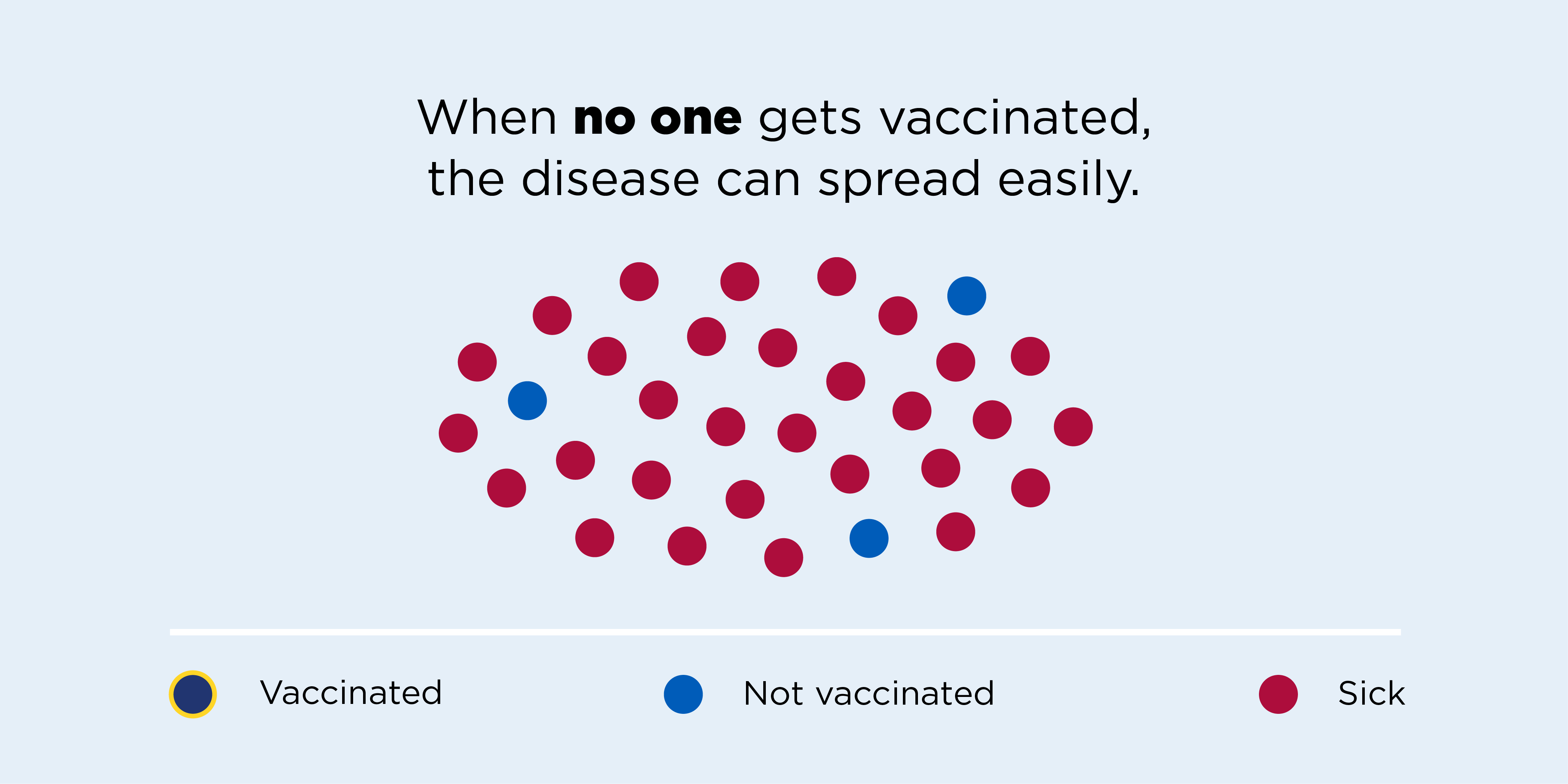When enough people in a community are vaccinated against a certain disease, it helps stop the disease from spreading — and that protects the whole community from disease outbreaks. This is called community immunity, or herd immunity.
Community immunity can only happen when a community has high vaccination rates, meaning most people are protected from a certain disease. But vaccination rates vary across the country — and communities with low rates are at risk for vaccine-preventable disease outbreaks. You’ve probably heard about recent measles outbreaks in the news. These types of outbreaks can happen when vaccination rates in a community are too low.
Knowing your community’s vaccination rates can help you take steps to maintain or improve them.
How can I find vaccination rates in my community?
Use these resources to learn about vaccination rates in your community.
View CDC Data
Explore how well people of all ages are protected against vaccine-preventable diseases — like measles, mumps, and whooping cough — with the interactive VaxView tools from the Centers for Disease Control and Prevention (CDC). These tools let you explore vaccination rates at a local, state, regional, and national level.
Check out CDC’s VaxView resources to learn about vaccination rates in your community.
Contact your health department
Your state or local health department can also help you learn about vaccination rates in your community — you can find them online or reach out by phone. In addition, health departments often have information about:
- Where to get vaccinated
- State vaccine requirements
- Free and low-cost vaccines, including travel vaccines
Community immunity starts with you
Outbreaks of preventable diseases still happen. The best way to prevent these outbreaks is to make sure you and your loved ones get all recommended vaccines. This not only protects the people you love — it also means you’re doing your part to support community immunity.
Learn more about community immunity.



